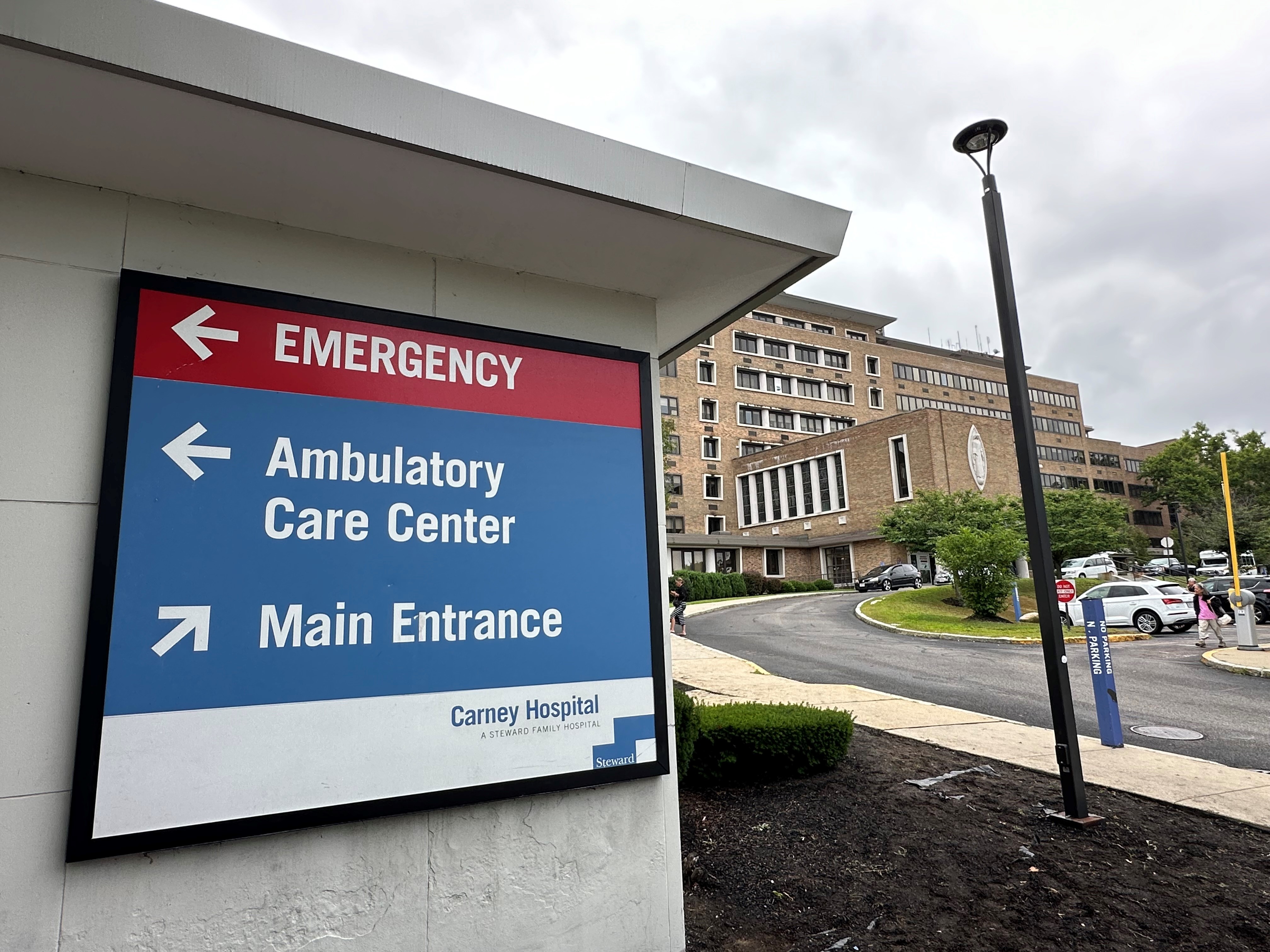Dorchester, Mattapan, and Roxbury coalitions awarded $5 million to close health gaps – WGBH

Report on Boston’s “Live Long and Well” Program: A Strategy Aligned with Sustainable Development Goals
Introduction: Addressing Urban Health Disparities
The City of Boston, in collaboration with financial partners, has awarded $5 million in grants to community organizations in Dorchester, Roxbury, and Mattapan. This initiative aims to reduce significant racial and ethnic health disparities by 2035. The program’s framework is directly aligned with several United Nations Sustainable Development Goals (SDGs), focusing on health, equality, and sustainable communities.
Targeting SDG 3 (Good Health and Well-being) and SDG 10 (Reduced Inequalities)
A 2023 report from the Boston Public Health Commission highlighted a critical challenge to SDG 3 (Good Health and Well-being), revealing a 23-year life expectancy gap between a census tract in Roxbury and one in Back Bay. Dr. Bisola Ojikutu, Commissioner of Public Health, identified the root causes as decades of community disinvestment and systemic inequities, which are central issues addressed by SDG 10 (Reduced Inequalities). The “Live Long and Well” program is designed to close this health gap through targeted investment and collaboration.
A Multi-faceted Approach Through Strategic Coalitions
The grant facilitates the formation of four coalitions from twelve community organizations, each tasked with addressing specific social determinants of health. This integrated strategy demonstrates a comprehensive approach to achieving the SDGs. Key project areas include:
- Integrated Mobile Services: A coalition including Upham’s Community Care, Dorchester Food Co-op, and Jamaica Plain Neighborhood Development Corporation will deploy mobile vans. This single point of contact will provide services that directly support multiple SDGs:
- Primary care access, advancing SDG 3 (Good Health and Well-being).
- Improved food access, targeting SDG 2 (Zero Hunger).
- Financial coaching, contributing to SDG 1 (No Poverty).
- Economic Empowerment Initiatives: Other projects will focus on English instruction, career training, and financial literacy programs. These efforts are crucial for achieving SDG 8 (Decent Work and Economic Growth) and SDG 1 (No Poverty).
- Community Stability Programs: The provision of housing and credit support directly contributes to SDG 11 (Sustainable Cities and Communities) by investing in stable and secure living environments for residents.
Fostering SDG 17 (Partnerships for the Goals)
This initiative exemplifies SDG 17 (Partnerships for the Goals) through its multi-stakeholder model. The collaboration unites municipal government (City of Boston), private philanthropy (Atrius Health Equity Foundation), and local non-profit organizations. The Atrius Health Equity Foundation has committed a total of $10 million, with a second round of grants scheduled for 2028, ensuring a long-term partnership. This coordinated approach, praised by community leaders like Darian Leta of the Dorchester Food Co-op, aims to consolidate resources and avoid the duplication of services, thereby maximizing impact.
Conclusion: A Holistic Investment in Sustainable Community Health
As stated by Mayor Michelle Wu, achieving health equity extends beyond healthcare to include investments in housing, nutritious food, and economic mobility. This perspective underscores the interconnected nature of the Sustainable Development Goals. The “Live Long and Well” program represents a significant, long-term investment in Boston’s future, creating a scalable model for addressing urban inequality by focusing on the foundational elements of community health and well-being.
Analysis of Sustainable Development Goals (SDGs) in the Article
1. Which SDGs are addressed or connected to the issues highlighted in the article?
The article highlights several interconnected issues that directly relate to multiple Sustainable Development Goals. The central theme of reducing health disparities through community investment touches upon health, equality, economic opportunity, and partnerships.
-
SDG 3: Good Health and Well-being
This is the most prominent SDG in the article. The entire initiative is centered on reducing “racial and ethnic health disparities” and closing a 23-year life expectancy gap between different neighborhoods. The provision of primary care through mobile outreach vans directly supports this goal.
-
SDG 10: Reduced Inequalities
The article explicitly states that the health disparities are a result of “racial and systemic inequities” and “decades of community disinvestment.” The program’s focus on specific neighborhoods (Dorchester, Roxbury, and Mattapan) to address these gaps is a direct effort to reduce inequalities within the city of Boston.
-
SDG 2: Zero Hunger
The article mentions that a coalition including the “Dorchester Food Co-op” will work on improving “food access” and providing “nutritious food” as a key component of improving health outcomes. This directly aligns with the goal of ending hunger and ensuring access to sufficient, nutritious food.
-
SDG 8: Decent Work and Economic Growth
The initiative recognizes that health is tied to economic factors. The article notes that projects include “career training,” “financial coaching,” and “financial literacy programs” to improve “economic mobility,” which are all components of promoting productive employment and decent work.
-
SDG 11: Sustainable Cities and Communities
The program addresses key components of making communities inclusive and sustainable. By providing “housing and credit support,” the initiative aims to improve living conditions, which is a core aspect of this SDG. The focus on specific urban neighborhoods makes this goal particularly relevant.
-
SDG 17: Partnerships for the Goals
The article is a clear example of SDG 17 in action. It describes a multi-stakeholder partnership involving the “City of Boston,” financial partners like the “Atrius Health Equity Foundation,” and 12 “community organizations” forming coalitions to achieve a common objective.
2. What specific targets under those SDGs can be identified based on the article’s content?
Based on the specific actions and goals mentioned in the article, the following targets can be identified:
-
Target 3.4: By 2030, reduce by one third premature mortality from non-communicable diseases through prevention and treatment and promote mental health and well-being.
The article’s focus on closing a 23-year life expectancy gap and providing primary care services through mobile vans is a direct effort to prevent premature mortality and improve overall well-being in the targeted communities.
-
Target 10.2: By 2030, empower and promote the social, economic and political inclusion of all, irrespective of age, sex, disability, race, ethnicity, origin, religion or economic or other status.
The program’s stated purpose is to “reduce racial and ethnic health disparities” caused by “racial and systemic inequities.” This is a direct attempt to promote the social and economic inclusion of residents in Dorchester, Roxbury, and Mattapan.
-
Target 2.1: By 2030, end hunger and ensure access by all people, in particular the poor and people in vulnerable situations, including infants, to safe, nutritious and sufficient food all year round.
The inclusion of the “Dorchester Food Co-op” and the goal to expand “food access” and provide “nutritious food” directly aligns with this target.
-
Target 8.5: By 2030, achieve full and productive employment and decent work for all women and men, including for young people and persons with disabilities, and equal pay for work of equal value.
The provision of “career training” and support for “economic mobility” are actions aimed at improving employment opportunities and economic outcomes for residents, which relates to this target.
-
Target 11.1: By 2030, ensure access for all to adequate, safe and affordable housing and basic services and upgrade slums.
The article mentions that organizations will work on “housing and credit support,” which is a direct contribution to ensuring residents have access to adequate housing.
-
Target 17.17: Encourage and promote effective public, public-private and civil society partnerships, building on the experience and resourcing strategies of partnerships.
The entire structure of the “Live Long and Well” program, which is a collaboration between the “City of Boston,” the “Atrius Health Equity Foundation,” and various community organizations, exemplifies this target.
3. Are there any indicators mentioned or implied in the article that can be used to measure progress towards the identified targets?
The article mentions or implies several quantitative and qualitative indicators that can be used to track the program’s success:
-
Indicator for Target 3.4: Average Life Expectancy.
The article explicitly cites a “23 years less” average life expectancy in one census tract compared to another. The reduction of this gap over time would be a primary indicator of success.
-
Indicator for Target 10.2: Reduction in Health Disparities.
The overarching goal is to “reduce racial and ethnic health disparities… by 2035.” Progress would be measured by tracking health statistics (like life expectancy, disease prevalence, etc.) and comparing them across different racial and ethnic groups within Boston.
-
Indicator for Target 2.1: Access to Food Services.
The expansion of “mobile outreach vans offering… food access” implies that progress can be measured by the number of residents served or the volume of nutritious food distributed by the Dorchester Food Co-op and its partners.
-
Indicator for Target 8.5/11.1: Number of People Receiving Support Services.
Progress towards improving economic mobility and housing can be measured by tracking the number of residents who participate in and benefit from the “career training,” “financial coaching,” “financial literacy programs,” and “housing and credit support” mentioned in the article.
-
Indicator for Target 17.17: Financial Investment and Partnership Formation.
The article provides concrete financial figures that serve as indicators of the partnership’s commitment, including the initial “$5 million in grants” and the total “$10 million” committed by the Atrius Health Equity Foundation. The formation of “four coalitions” from 12 organizations is also a tangible indicator of partnership.
4. Summary Table of SDGs, Targets, and Indicators
| SDGs | Targets | Indicators Identified in the Article |
|---|---|---|
| SDG 3: Good Health and Well-being | 3.4: Reduce premature mortality from non-communicable diseases. | Reduction in the 23-year life expectancy gap; provision of primary care services. |
| SDG 10: Reduced Inequalities | 10.2: Promote social and economic inclusion of all, irrespective of race or ethnicity. | Reduction of “racial and ethnic health disparities” in Dorchester, Roxbury, and Mattapan by 2035. |
| SDG 2: Zero Hunger | 2.1: End hunger and ensure access to safe, nutritious food. | Increased “food access” and provision of “nutritious food” via mobile vans and the Dorchester Food Co-op. |
| SDG 8: Decent Work and Economic Growth | 8.5: Achieve full and productive employment and decent work for all. | Number of residents participating in “career training,” “financial coaching,” and “financial literacy programs” to improve “economic mobility.” |
| SDG 11: Sustainable Cities and Communities | 11.1: Ensure access for all to adequate, safe and affordable housing and basic services. | Provision of “housing and credit support” to residents. |
| SDG 17: Partnerships for the Goals | 17.17: Encourage and promote effective public, public-private and civil society partnerships. | The $5 million grant award; the $10 million total commitment from Atrius Health Equity Foundation; the formation of four coalitions among 12 organizations. |
Source: wgbh.org

What is Your Reaction?
 Like
0
Like
0
 Dislike
0
Dislike
0
 Love
0
Love
0
 Funny
0
Funny
0
 Angry
0
Angry
0
 Sad
0
Sad
0
 Wow
0
Wow
0


-1920w.png?#)





































































